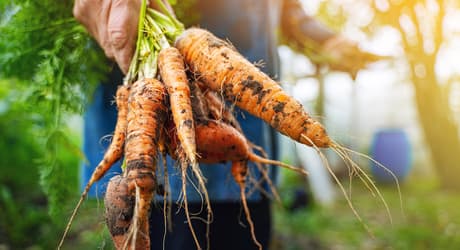Get in touch
Our automation works smarter, wastes less, and optimizes your lines to ensure quality is consistent and potential recalls are a thing of the past.
Speak with us to learn how you can make Every Resource Count™!
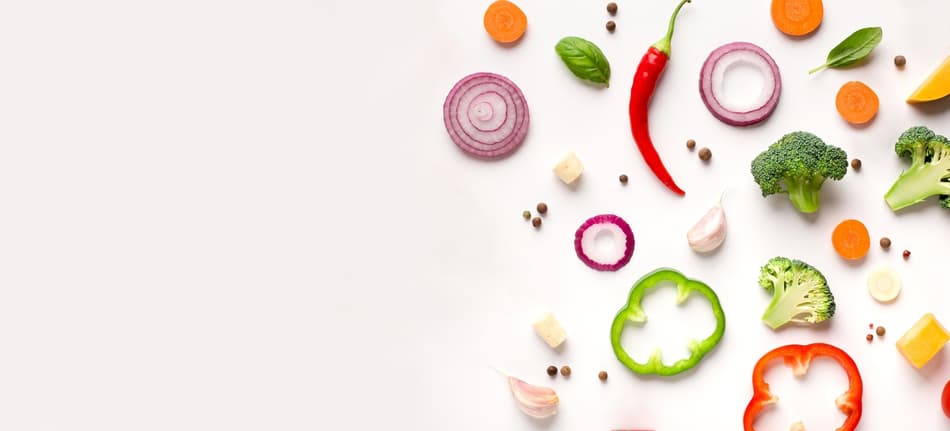
Guaranteeing food safety. Protecting brand reputations. Complying with product specifications. Minimizing food waste. Maximizing yields. Protecting profitability. Too many challenges for the growers, processors and packers of fresh, fresh-cut, canned, frozen and dried vegetables! Challenges which would be so much easier if foreign materials didn’t get mixed up with freshly harvested vegetables. Or if every batch of vegetables didn’t contain sub-standard product. Or if the presence of these unwanted materials on the processing line wasn’t sometimes almost impossible to detect.
Worse still, these challenges are intensifying because the market is changing. Increasing demand for both fresh and frozen vegetables - a trend accelerated by the COVID-19 pandemic - puts processors under more pressure to handle greater volumes at higher throughputs. And increasing demand for organic foods - expected to rise by 50% in the next five years - means that more vegetables grown without pesticides or herbicides are arriving at processors mixed up with toxic weeds, vermin, and insects.
The good news is that optical sorting machines can deal with all these challenges. Thanks to ongoing technical developments and innovations by industry-leader TOMRA Food, there are highly effective sorting solutions for every type of vegetable product: IQF, fresh pack and freshcut, canned, dehydrated, and freeze-dried.
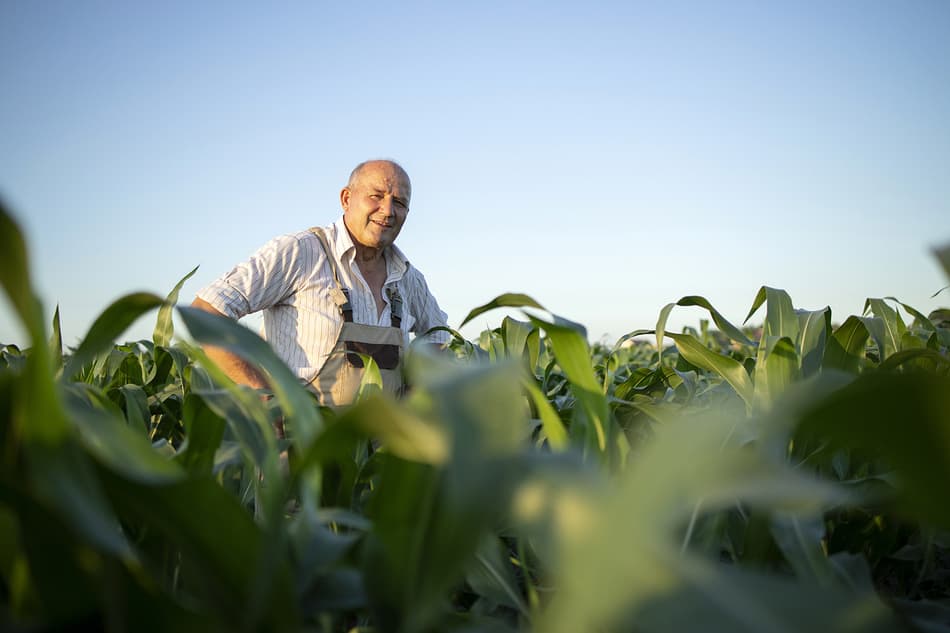
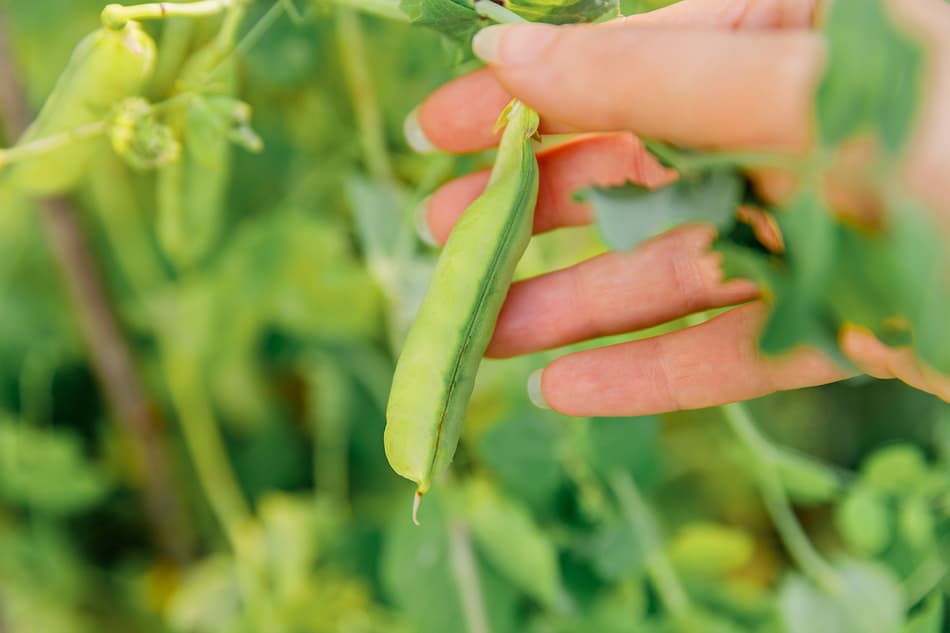
What’s more, in addition to ensuring food safety and product quality, today’s sorters also deliver a multitude of other benefits. They grade to specification, increase removal efficiency, minimize false rejects, reduce or eliminate the need for manual intervention, help solve labor problems (scarcity, cost, effectiveness, knowledge and training), reduce line downtime, and - through the TOMRA Insight cloud-based data platform - provide valuable data about the product sorted. Through all of these capabilities, sorters improve sustainability by cutting food waste while enhancing yields and profits.
You name it, and in a load of freshly harvested vegetables, you’re likely to find it. Clods of earth, rocks, stones, sticks, stalks, vines, toxic weeds, field mice, plastic bottles, fragments of glass - all of these things and others get mixed in with vegetables delivered to processing lines. The extent of this problem varies with crop type and field location, but there’s no getting away from it.
This necessitates pre-sorting to remove foreign materials before the vegetables are fed onto the processing line. The more it is possible to sort out at this preliminary stage, the less it will be necessary to do later, enhancing throughputs. TOMRA offers four different optical sorters for vegetable pre-sorting: the Sentinel II, Halo, TOMRA 3A, and TOMRA 5A.
The TOMRA 3A is used mostly for unwashed potatoes (and unpeeled onions), which we’re not considering here, but we’ll take a look at the other three machines.
The Sentinel II combines TOMRA’s pulsed LED/ sensor arrays with a simple user interface to remove a broad range of foreign materials, rodents, defects, discoloration, damage, and undersize product. The Sentinel II’s superior technical specification enables it to outperform competitors in sorting efficiency and sorting capacity. With three different sizes giving a wide capacity range, it’s ideal for seasonal and yearround processors.
Also popular for pre-sorting many types of whole vegetables is the Halo, a high-performance machine that sorts according to size, shape and quality. The Halo uses top and bottom sensor banks to view each individual object in flight using a combination of LED, CCD camera, and nearinfrared. This performs targeted spectroscopy to 1mm precision. The Halo is suitable for carrots, beets, and onions, as well as fresh pack carrots, parsnips, cucumbers, and gherkins. Depending on the application, the Halo increases yield by up to 4%, increases throughput by up to 25%, and reduces labor requirements by up to 80%.
Another machine often used for pre-sorting, and even more efficient than the Sentinel II and Halo at removing foreign material, is the TOMRA 5A. This belt machine employs top and bottom sensor banks to view each individual object in flight using a combination of pulsed LED, camera and near-infrared. As with the Halo, targeted spectroscopy is precise to 1mm - achieving a superior foreign object removal rate of more than 98%. These high efficiencies, combined with low false reject rates, are often a key requirement to protect the cutters in the processing line.
When the vegetables are fed onto the processing line, the search for foreign materials continues, but now it’s time to also focus sharply on product quality. For IQF processing, removing as many product defects as possible at this stage will save on freezer space and associated electricity costs. However, there will be another opportunity for sorting after the vegetables have passed through the freezer tunnel. For fresh pack and fresh cut vegetables, though, there are no second chances: it’s now that the product has to be fully sorted to ensure food safety and meet required standards.
The Genius, a belt sorter that is low-maintenance and easy to use, offers different technologies for different inspection zones: high-resolution cameras and lasers can be combined with fluorescent lighting or LED in one area and ultraviolet or infrared in another. This machine is typically used for sorting fresh-cut, blanched, or dried/dehydrated vegetables. Acquiring a Genius is an investment that quickly pays back.
More sophisticated still is the TOMRA 5B. Also a belt machine, this combines 360-degree surround view camera technology with advanced shape algorithms for object processing and laser technology. Capable of sorting according to color, shape, structure, and biological elements such as chlorophyll and solanine, this sorter is ideal for the targeted identification of individual defects in high-volume production flows the TOMRA 5B is typically used for peas, carrots, green beans and spinach, as well as corn, and bell peppers; is capable of detecting and ejecting toxic weeds such as Datura and Nightshade from peas and green beans; and has an unrivalled ability to remove core from Iceberg lettuce. This machine is also exceptionally well designed for fast and efficient cleaning, with an open system which results in fewer unreachable areas and a lower risk of waste material building up.
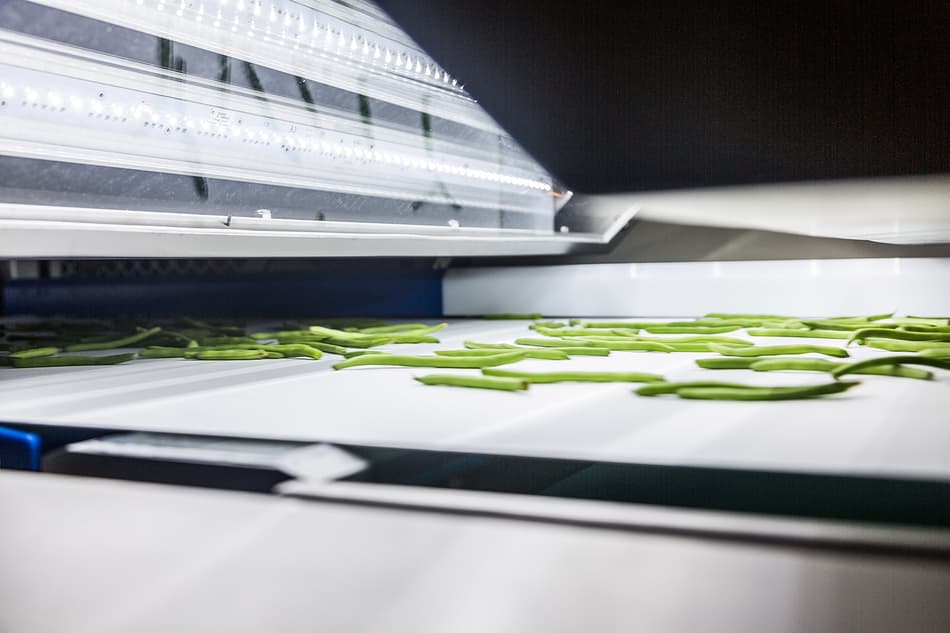
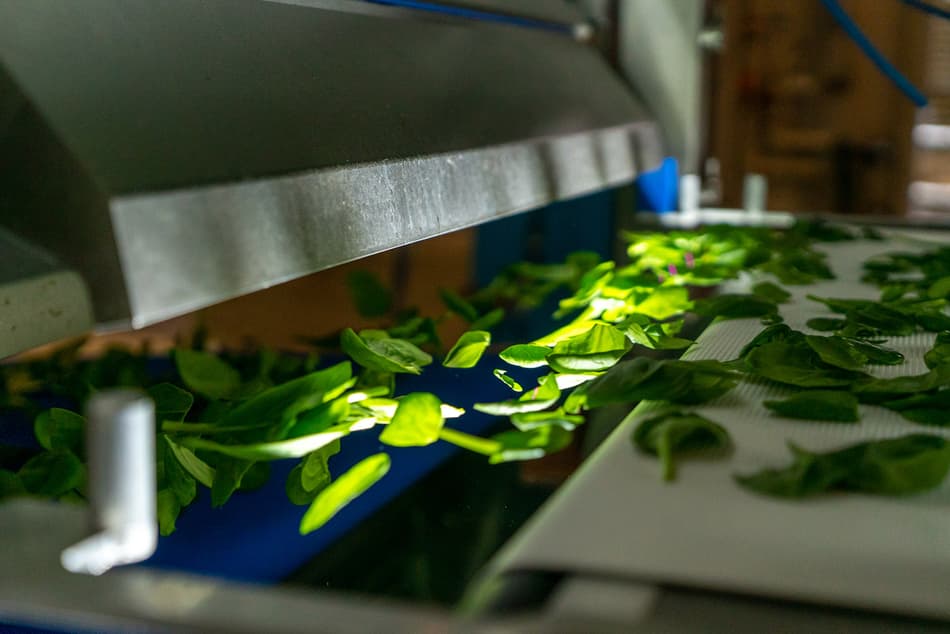
When processing IQF vegetables, there is a final quality check to be made, either immediately after the freezing tunnel, on the mixing line, or just before the product is packed. This is an additional opportunity to find and remove unwanted materials that were just not visible or were missed when sorting before the product was frozen. For example, there might be remaining carrot slices or dices in the product stream with color or shape defects. Or there might still be some Datura or Nightshade mixed in with frozen peas because these weeds are so similar in appearance to the acceptable product and sometimes only possible to detect with our BSI+ technology. Another example is that there can be small embedded stones present inside of soft diced vegetables like eggplant or zucchini.
Three machines are typically assigned to handle these checks: the Ixus Bulk, Blizzard, and Nimbus BSI+.
The Ixus Bulk scans product in bulk to detect dangerous foreign materials - such as metal, glass, and small rocks - which that may be freeflowing in the product stream or embedded in the product. This machine has been engineered around the best performing x-ray detector for unmatched image resolution, resulting in the ability to find the smallest defects at high throughputs.
The Blizzard, a free-fall sorter with a small footprint, does its detection work with pulsed LEDs and a combination of cameras. Optimally positioned after IQF tunnels or on packaging lines, this machine’s lighting system generates little or no heat in the cold environment and needs very little calibration or maintenance. The LEDs’ different wavelengths detect unwanted foreign material, misshapen product, and discolored product.
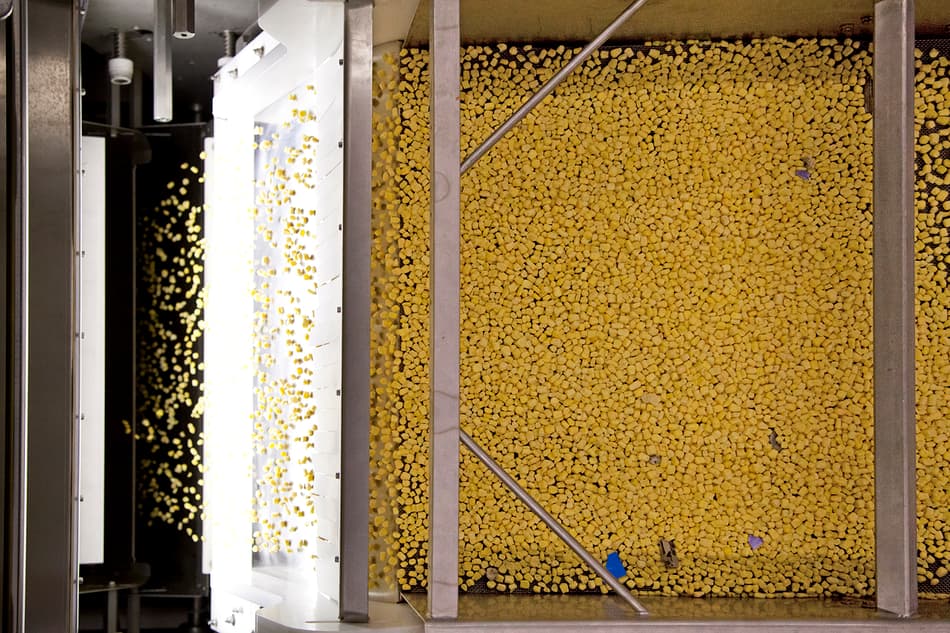
The Nimbus BSI+ is used in applications where it will do an even better job than the Blizzard in sorting-out some types of difficult-to-detect foreign materials or extraneous vegetable material. This machine’s unrivalled way of ‘seeing’ combines multiple high-resolution lasers with TOMRA’s unique Biometric Signature Identification (BSI) technology. This means that, in addition to also detects their biometric characteristics. It instantly compares these characteristics with features stored in its database to determine whether the objects should be accepted or rejected. Sorting accuracy is superior because there is no other technology like this. BSI+’s accurate classification of products and defects allows for more accurate data about the sorting process, which can be translated into valuable product information through TOMRA Insight.
Thanks to the various tasks performed by all of these sorters, all major operational challenges are addressed. Processors can assure food safety and product quality with total confidence.
Despite the sometimes mind-boggling sophistication of TOMRA’s sorting technologies, all are easy to operate. And while TOMRA is an industry leader globally, this success is built upon a solid foundation of local-level customer support. This includes operational advice, machine operator training, machine maintenance, and emergency technical support.
The advent of the COVID-19 pandemic, with its travel limitations and social distancing, has highlighted the value of TOMRA’s ability to complement on-the-ground support with remote assistance. One recently launched technology, TOMRA Visual Assist, is a good example of this. By using a smartphone app, a TOMRA field service engineer can provide detailed advice to a customer thousands of miles away, just as if they were standing right in front of the customer’s machine. TOMRA Visual Assist also allows customers and engineers to share documents or annotate images to explain and clarify directions.
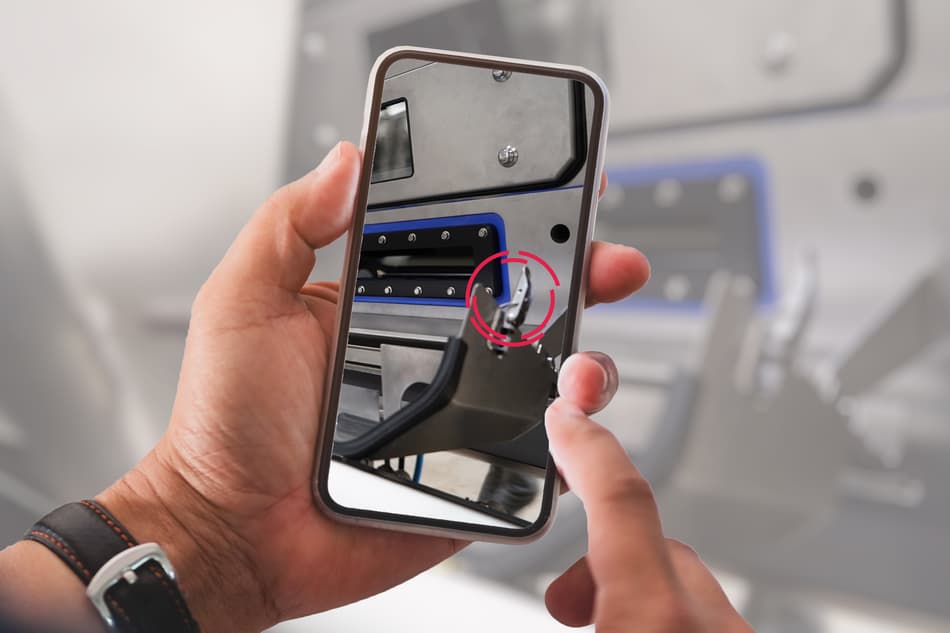
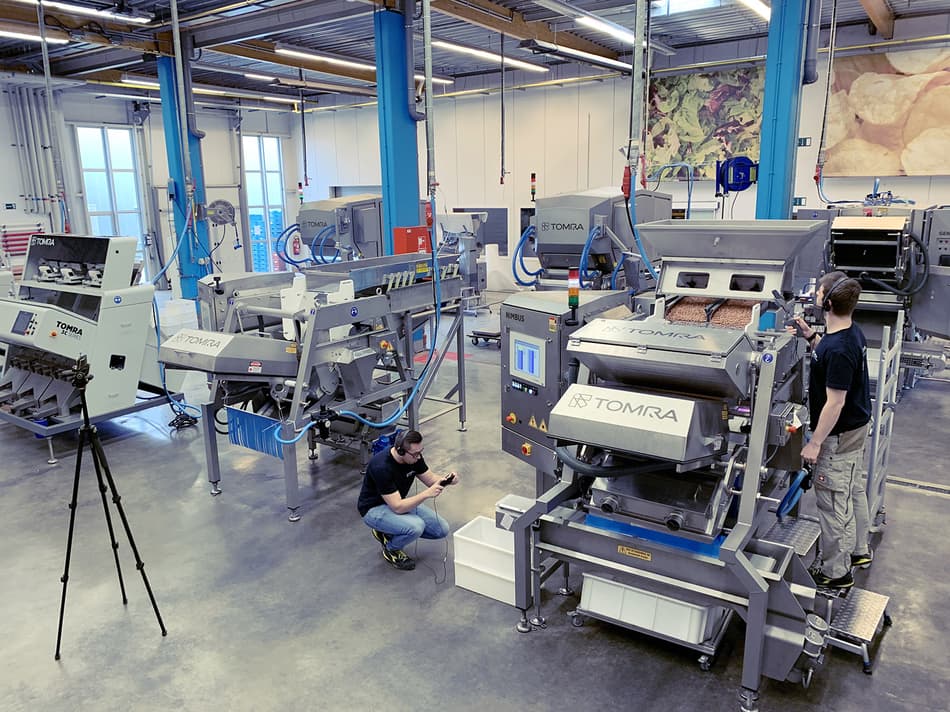
Another initiative proving helpful during these unusual times is TOMRA’s Online Demonstration Room. This makes it possible for processors to test-run TOMRA’s sorting (and peeling) machines - using their own infeed materials, or materials very similar to what they have to deal with - even if they are unable to visit a TOMRA Test and Demonstration Center in person. Tests are shown via a live video link, with the customer encouraged to ask questions and make requests, and all results are precisely quantified. Despite travel restrictions, customers can be certain of a machine’s capabilities before making a significant investment decision.
This is, many satisfied customers would agree, typically TOMRA: developing technologies to overcome adversities.

Helping vegetable processors achieve food
safety and product quality
555.06 Kb
